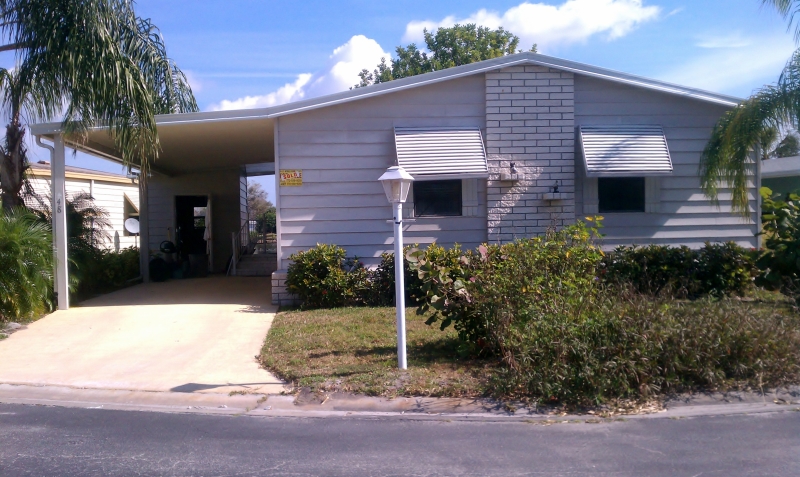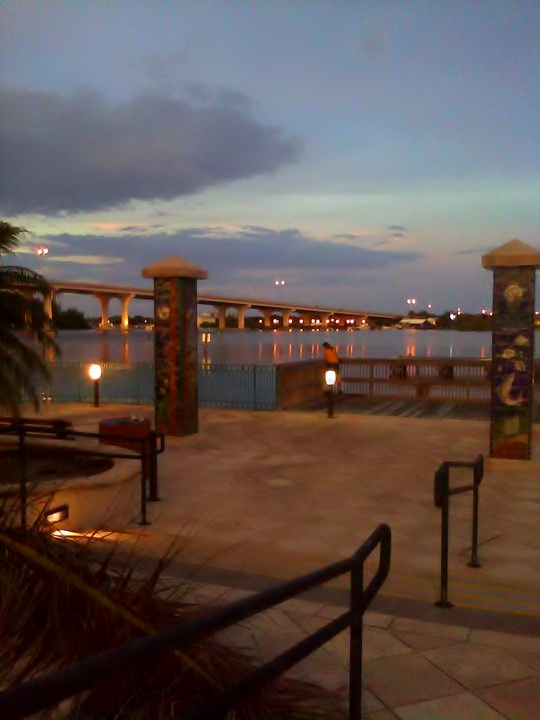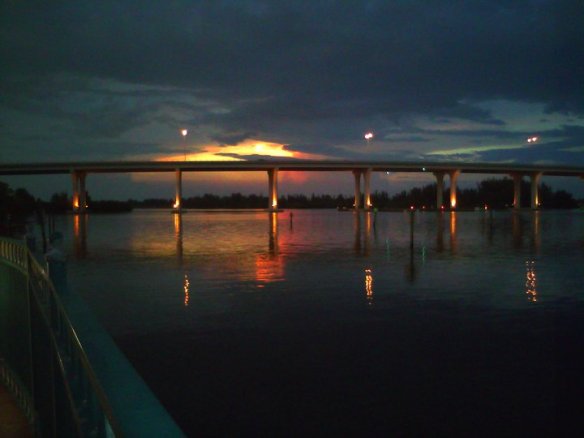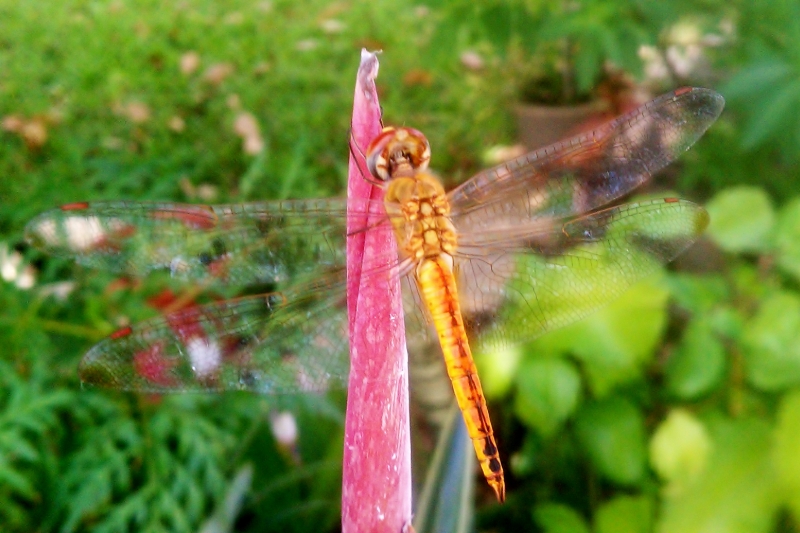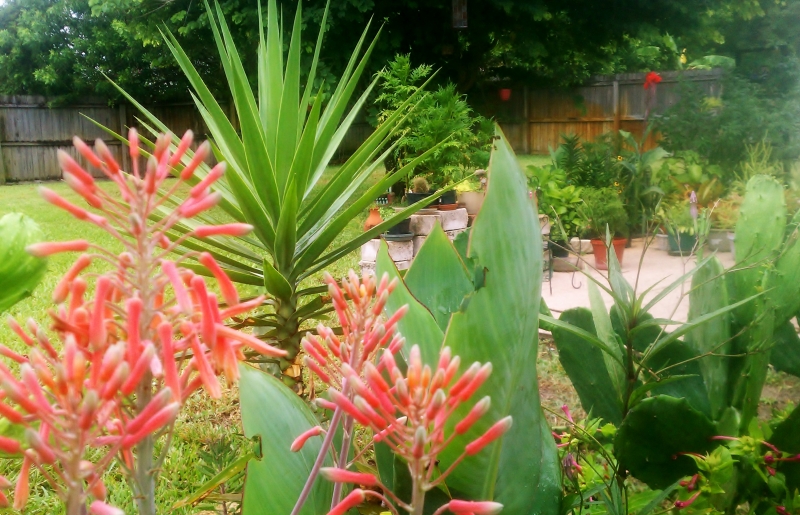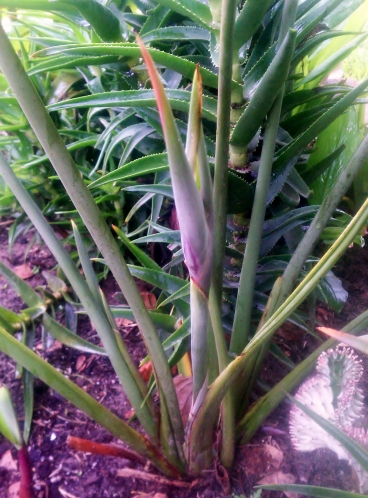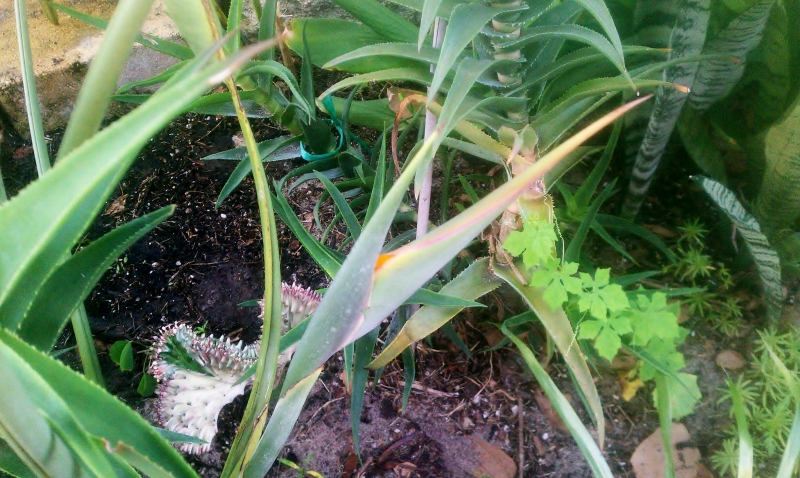Haulover Canal, built in the mid-1800s, is the only connection between the Indian River Lagoon to the West and the Mosquito Lagoon to the East. Located in the Merritt Island National Wildlife Refuge, the canal is a popular kayak launch site for eco-tourists:
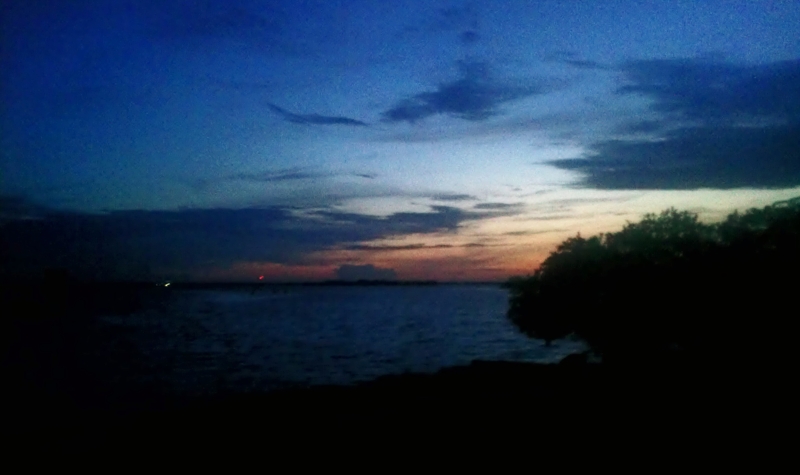
Haulover Canal Launch Ramp, 8:24pm, Aug 19, 2012
Considered one of the most diverse estuaries in North America, the Merritt Island National Wildlife Refuge is home to over 3,000 different plant and animal species, like the wild boars 😯 we saw grazing at the boat ramp turn-off:

But we were there for other reasons, so drove off to find the kayaks:.

We were about to see the light! 🙂
Our eco-guide explained what lay ahead ❗
From July through October, the lagoon comes alive at night with bioluminescence, a unique microbial phenomenon found en masse in only 4 places on earth! Tiny marine plankton known as dinoflagellates emit a bluish-green light when disturbed. Although these algae are invisible to the naked eye, when agitated in high concentrations they emit light so strong you could read a book! A quick glance at the chart below explains the process:
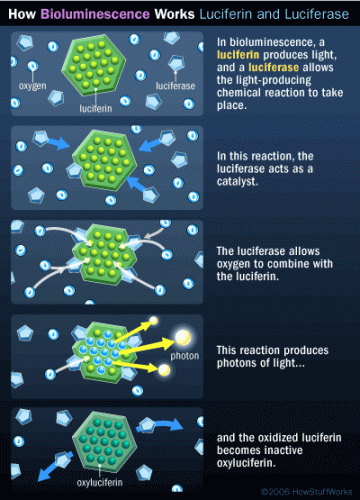
Dinoflagellate species that rely on photosynthesis for food have luciferin (similar to chlorophyll) in their small bodies.
Simply stated, anything that brushes against, or snaps a plankton’s outer membrance triggers the light….much like snapping a glow stick, which ironically we wore for nighttime illumination on the VERY dark waters! 😉
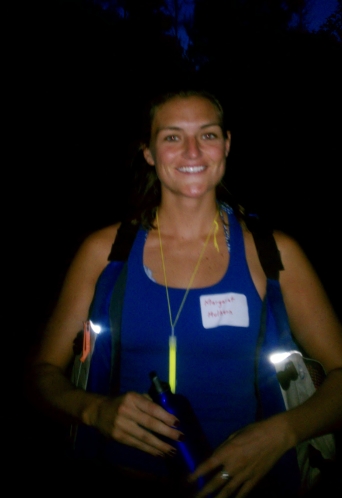
After receiving paddles and safety instructions, we launched, single file, into a night that suited our purpose perfectly. 🙂 The sky was clear and sparkled with stars but wasn’t overly bright ➡ dinoflagellates are best observed 5 days before or after a new moon.
Access to the the Bio Bay is via a narrow “no wake” channel lined with banks of mangroves overgrown, and cypress branches joined aloft as if in handshake. Paddling through this vestige of Old Florida, I almost forgot the Space Shuttle launch pads and massive Vehicle Assembly buildings perched at the southern end of Mosquito Lagoon. When frontiers collide, it’s disconcerting!
And suddenly our guides were blowing whistles, gathering us round for one last caveat about flying fish and batting them away….but oh my goodness!!! Who could listen when the water below was glowing like neon and everyone gasped in awe?!
With 45mins to explore, our little armada split up, 14 kayaks traveling in 13 different directions, paddles (and hands!!) disturbing the surface for maximum effect! 🙂
That’s when it happened ➡ with machine-gun fire syncopation, mullet exploded around our 2 boats! Maggie and I were in a double kayak, her fiancé nearby in a single when we heard him shout, “One’s in the boat!” 🙂 What do we do?”
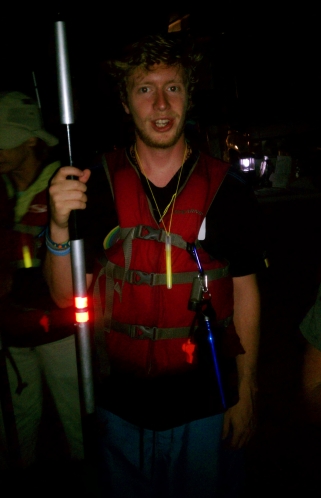
Seamus with Kayak Paddle, aka the Fish Bat! 😉
We made our way closer to steady his kayak and help grab the desperate, flopping fish! 🙂 A funny scene, made more absurd when we realized the lagoon floor was only 2ft below and we’d been trying so hard NOT to capsize! hahahahaha!!
All’s well that end’s well, though! The fish survived the adventure and so did we! Driving home, Maggie said, “I think that’s the best thing we ever did!”
So do I! 🙂

Until next time……
🙂
Related articles
Share this post via social media!






